In certain situations, it is essential to restrain a dog with a towel to ensure its safety. For example, if the dog needs medical care, grooming, training, or behavior modification. In worse situations if a dog is aggressive or having stress or fear you should use a towel to restrain it. Imagine your dog has an injury on his paw, as you move toward the first aid kit, your dog who is usually calm, gets confused.
It is necessary to note that using a towel to restrain should always be done with proper care for the dog’s well-being.
Improper or forceful handling results in fear and stress, which could create negative associations with towels. By following this guide at Home of Towels you will learn how to restrain a dog with a towel safely.
Safety Precautions
When restraining a dog with a towel, it is essential to prioritize the safety of the dog and handler. The following are some safety precautions you should take into account:
1. Gentle Touch
Use a gentle touch to avoid causing anxiety or discomfort to the dog.
2. Positive Reinforcement
Utilize positive reinforcement techniques to create a positive association with the act of being restrained.
3. Avoid Tight Wrapping
Avoid wrapping the towel too tightly around the dog because it can restrict breathing and cause discomfort.
4. Safe Grip on Towel
To prevent sudden movements and escaping of the dog, hold a secure grip on the towel.
5. Short Restraining Duration
The duration of the restraining process should be short to avoid stress and discomfort.
6. Understand your Dog’s Capacity
Before looking for how to restrain a dog with a towel, you should understand your dog’s capacity first and then adjust the restraining technique accordingly to avoid inconvenience.
7. Emergency Release
If you feel your dog is over-stressed or agitated, release the dog immediately.
Understanding Your Dog
To ensure the safety of yourself and the dog while learning how to restrain a dog with a towel, it is essential to understand your dog before restraining it with a towel. The following steps help you understand your dog before restraining it:
- Body language
- Temperament
Body language:
To understand the body language of your dog, pay close attention to it. If your dog is avoiding eye contact, or it has raised hair, straightened ears, raised hackles, or a tucked tail these are the signs of stress and fear. Approach with caution if the dog shows any of these signs.
Temperament:
Consider the temperament and previous behavior of your dog. Certain dogs may have higher levels of sensitivity whereas others may be accustomed to handling and restraint. By Understanding your dog’s personality, you will anticipate its reaction better.
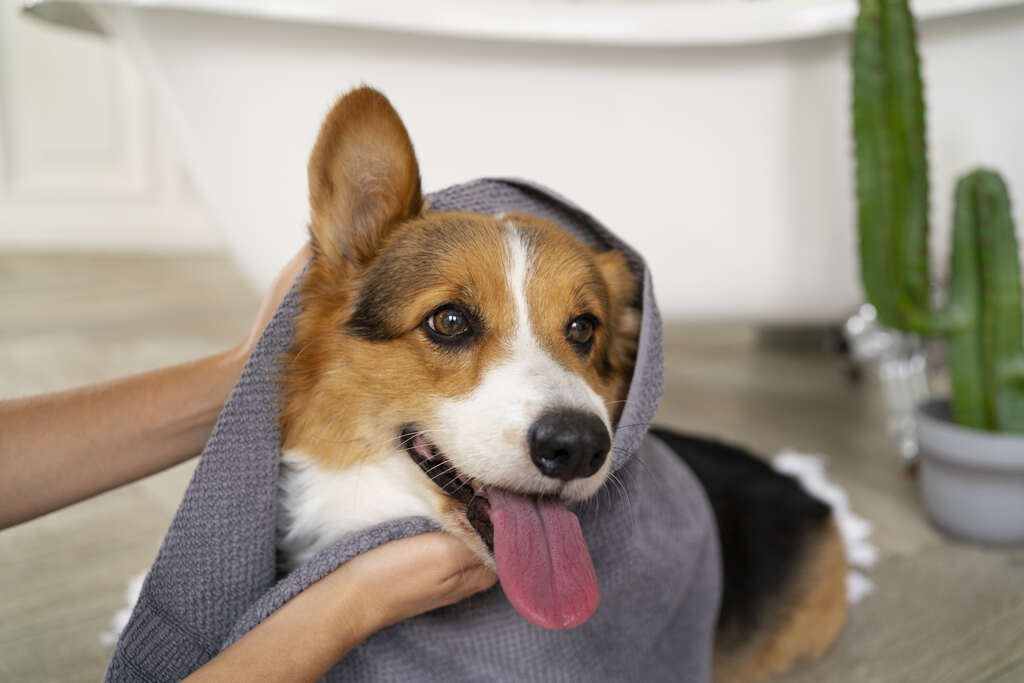
Choosing the Right Towel
It is essential to consider certain characteristics when looking for how to restrain a dog with a towel. Here are some important characteristics of an ideal towel for restraining a dog:
- Size
- Material
- Thickness
Size:
Choose a towel that is of suitable size for the dog. It should be sufficiently large to comfortably wrap around the dog’s body without being too bulky.
Material:
For restraining a dog with a towel, choose a towel that is soft and durable. For example, cotton towels are the best choice as they are very gentle on the dog’s skin and are very absorbent.
Thickness:
Choose a towel having a moderate thickness. It must be thick enough to provide some support for the restraint but not so thick that it becomes challenging to handle.

Step-by-Step Guide on How to Restrain a Dog with a Towel
Safety is the first thing to consider when restraining a dog with a towel. Here is a step-by-step guide on how to restrain a dog with a towel safely:
Step 1
Before starting, make sure that you have a soft and durable towel of appropriate size based on your dog’s size and breed.
Step 2
Start by allowing the dog to smell and become familiar with the towel. This helps reduce the stress and enhance the comfort of the procedure.
Step 3
Body Wrap
- Wrap the towel around your dog’s back gently.
- Raise the ends of the towel and cross them beneath the dog’s belly.
- Loop the ends over the dog’s back and securely tie them.
Step 4
Make sure the towel is secure, but not too tight. It is important to have enough space to fit two fingers between the dog and the towel. This will prevent any discomfort and enable controlled restraint.
Step 5
Pay close attention to your dog’s behavior while they are being restrained. Look for signs of stress, unease, or opposition. If your dog seems distressed, consider modifying the restraint or releasing them.
Step 6
If your dog shows resistance, stay calm. Use gentle and encouraging language, and offer extra treats if necessary. As your dog becomes more accustomed, gradually extend the duration of restraint.
Step 7
Practice restraining your dog with a towel in short training sessions. Gradually increase the duration as your dog grows more at ease because “Practice makes a man Perfect”.
Step 8
Once you have finished, release your dog with praise and offering treats. This helps to strengthen positive associations with the towel and makes handling easier in the future.
Training Tips for Dogs Who Resist Restraint
If your dog resists restraining you will search “how to restrain a dog with a towel” on Google, but here are some tips for training your dog:
1. Positive Reinforcement:
Utilize positive reinforcement techniques including treats, praise, and rewards to encourage your dog to calmly accept the restraint. This makes the restraint more enjoyable for your dog.
2. Desensitization:
Gradually introduce your dog to the feeling of being restrained in a positive and controlled manner. Begin with brief intervals of gentle restraints and gradually increase the interval as your dog becomes comfortable.
3. Patience and Consistency:
During the training efforts be patient and consistent. It may take time, so regularly practice short sessions to help your dog become more comfortable with restraint.
4. Gentle Handling
Make sure you handle your dog in a gentle and caring manner during restraint. Avoid using force or causing any discomfort, as this can lead to increased resistance and stress in your dog.
5. Gradual Introductions:
Introduce various forms of restraint slowly and gradually. Begin with basic handling and progress to complex restraints gradually, such as harness or grooming tools.
6. Professional Guidance:
Learning how to restrain a dog with a towel yourself is a good approach but if your dog persists in resisting restraint despite your best efforts, it may be beneficial to seek assistance from a professional dog trainer or behaviorist. They can provide tailored training techniques and advice based on your dog’s requirements.
Variations of the Towel Restraint Techniques
There are different methods of restraining a dog with a towel:
- Makeshift Sling Method
- Blanket Burrito Method
- Rolling Technique
- Slip Knot Method
Makeshift Sling Method
- Place the towel beneath the dog’s belly, ensuring that the longer sides hanging on both sides.
- Raise the towel ends and cross them over the back of the dog.
- Secure the ends of the towel, forming a makeshift sling to assist the dog.

Blanket Burrito Method
- Place the dog in the center laying the towel flat on the ground.
- Wrap the dog’s body tightly by lifting one side of the towel.
- Repeat the process with the other side, creating a “Burrito” effect.
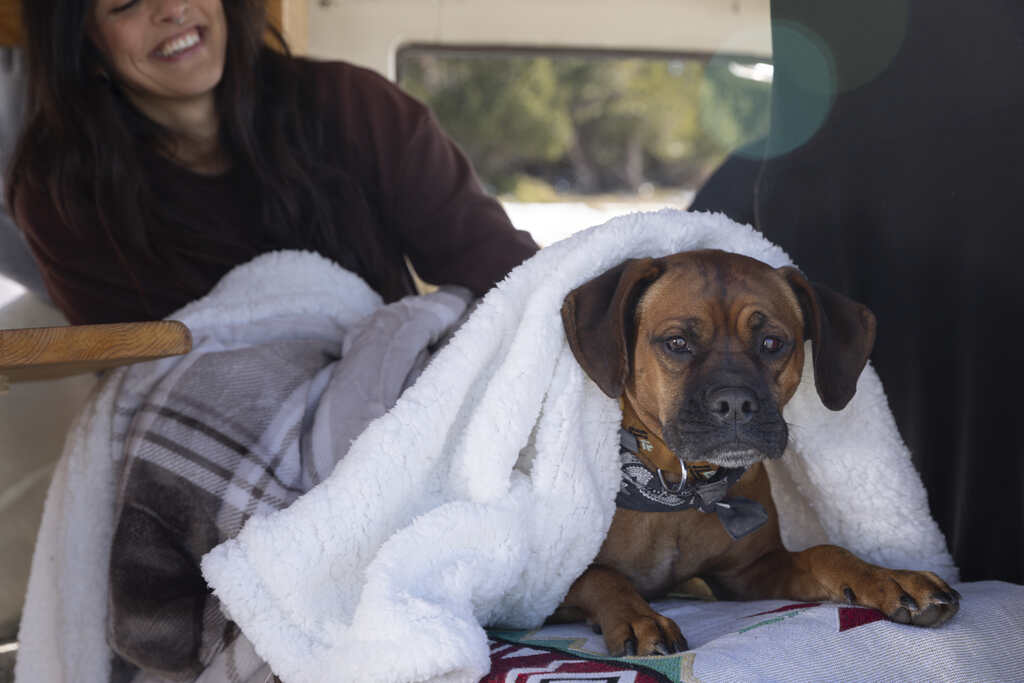
Rolling Technique
- Place the towel in a flat position and encourage the dog to lie down on it.
- Gently wrap the dog in the towel like towel rolling, ensuring a secure wrap around its body.
- Use this technique for dogs that are at ease lying down during restraint.
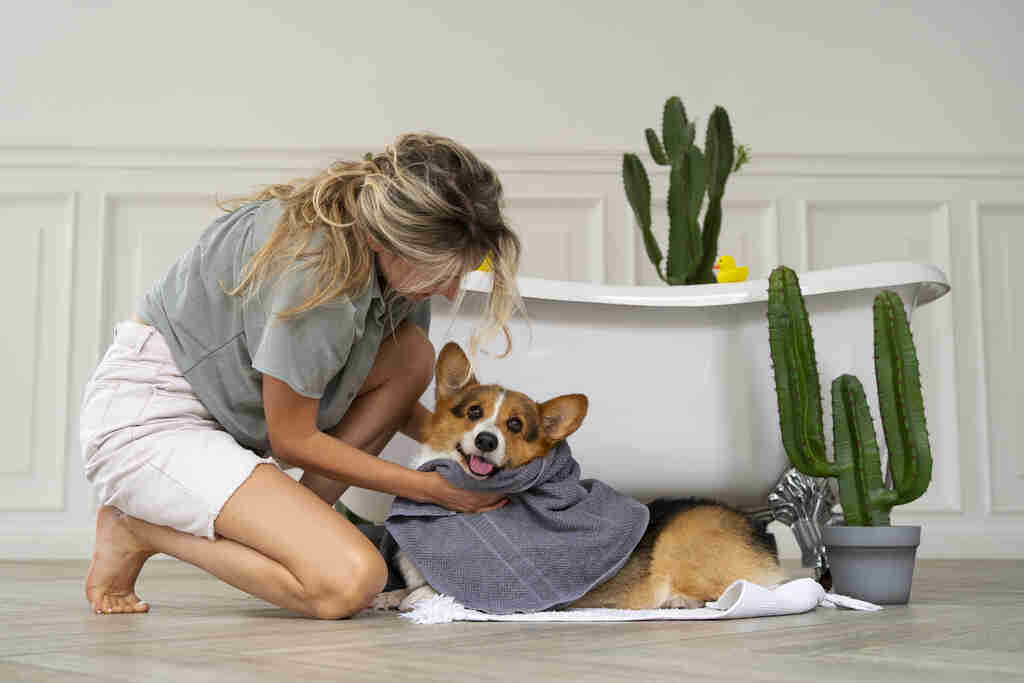
Slip Knot Method
- Place a towel horizontally behind the dog’s shoulder.
- Cross both ends of the towel over the dog’s back and beneath its belly.
- Proceed by creating a loop with the crossed ends and pulling one end through to form a slip knot.
- Carefully secure the slip knot around the dog’s body, making sure it is not excessively tight.
- Make necessary adjustments to ensure the dog’s comfort and safety.
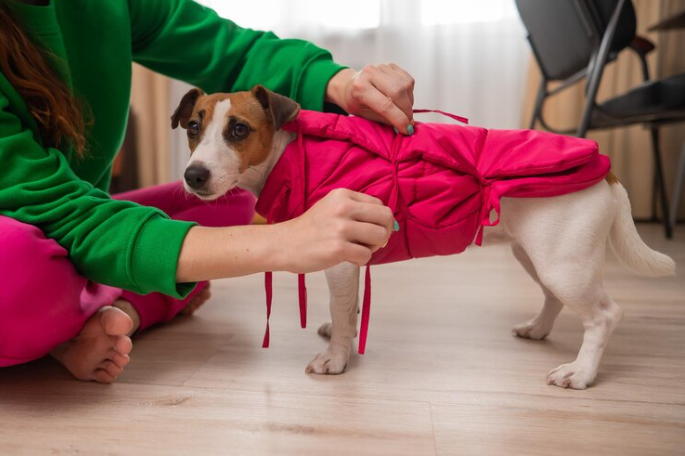
When to Seek Professional Help?
It is essential to have a proper understanding of when to seek professional help while learning how to restrain a dog with a towel. This knowledge plays a vital role in guaranteeing the well-being and safety of both the dog and handler.
Here are some cases in which getting professional assistance is necessary:
- If the dog shows aggression, such as growling or biting, it is advisable to seek guidance from a professional dog trainer or behaviorist.
- Professional assistance is necessary if a dog experiences excessive fear or stress. In this case, a professional can guide calming techniques.
- It is essential to consult with a veterinarian before restraining a dog with a towel if a dog has known medical conditions to prevent health problems.
- Moreover, dogs with specific requirements, such as disabilities might require specialized methods of handling and experts can provide tailored guidance.
- If the dog exhibits signs of injury or unease during or after restraint, immediate professional assistance is imperative.
FAQs
How to restrain a dog with a towel who is aggressive?
Place the towel over the back of your dog gently, carefully under its head, and then securely wrap the towel around it ensuring the safety of your dog.
How to restrain a big dog?
To restrain a big dog, use a sturdy leash or harness, approach firmly, but gently direct the dog’s action. Use caution and seek professional assistance if needed.
How do you muzzle a dog with a towel?
Let the towel hang in a U-shape holding the ends of the towel in both hands. Hold the towel so that the dog’s head slips between the ends of the towel. Then, hold the ends together ensuring that the dog is unable to escape.

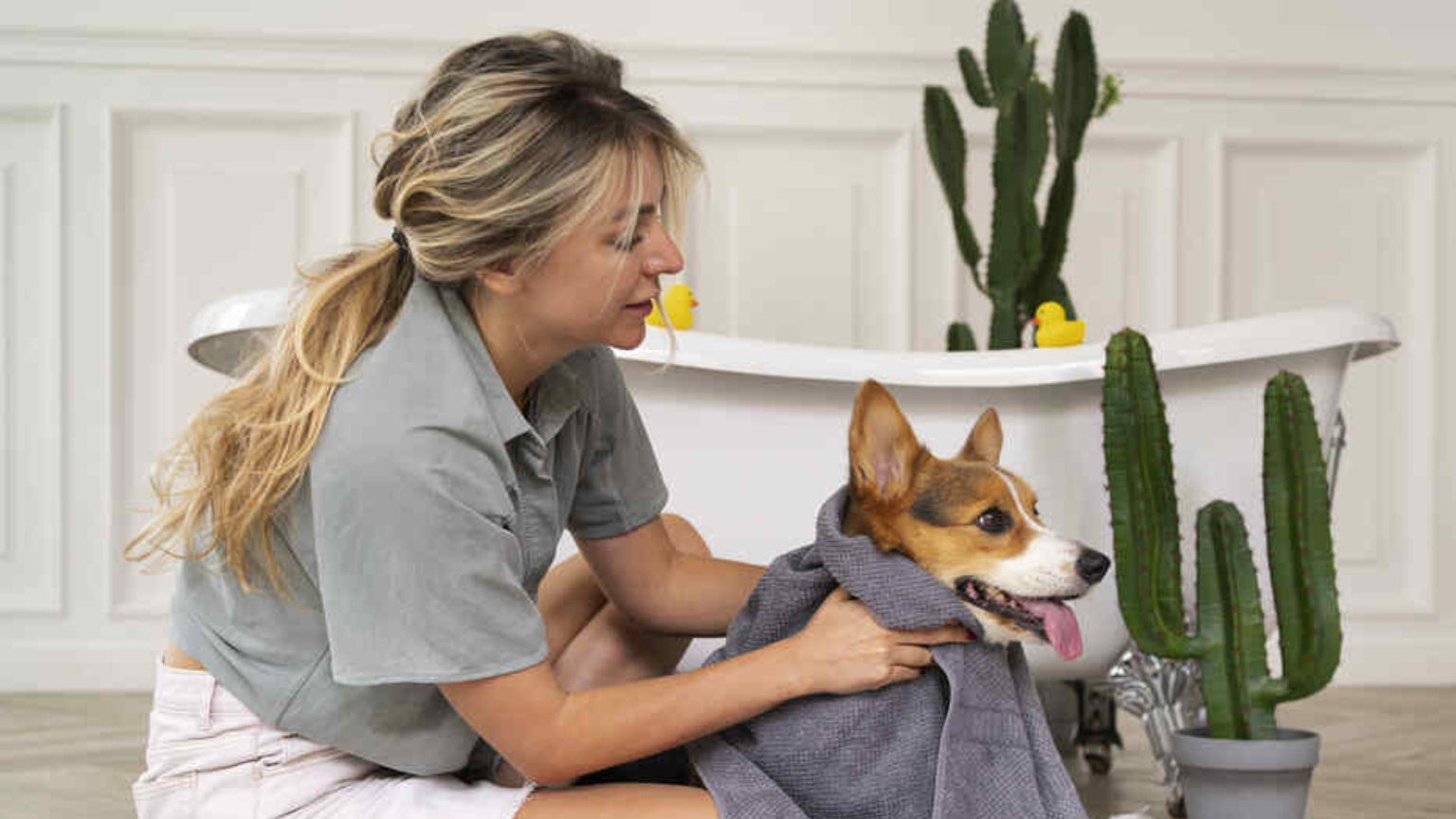
Great site with quality based content. You’ve done a remarkable job in discussing. Check out my website Webemail24 about Mobile Apps and I look forward to seeing more of your great posts.
Bookmarked, so I can continuously check on new posts! If you need some details about Blogging, you might want to take a look at Seoranko Keep on posting!